Carr’s work has been widely written about, and her own writings provide a fascinating narration of her thoughts, travels, and considerations of artistic life. Through these texts, as well as plays, documentary films, websites, and a number of major exhibitions, Carr’s powerful influence on art in Canada is well documented.
Key Exhibitions
Carr’s work has been exhibited across Canada, in Europe, and in the United States. These entries do not include the numerous small shows that she also took part in, especially her exhibitions in Victoria at the beginning of her career. Her work has been the subject of more retrospectives than any other historical Canadian artist.
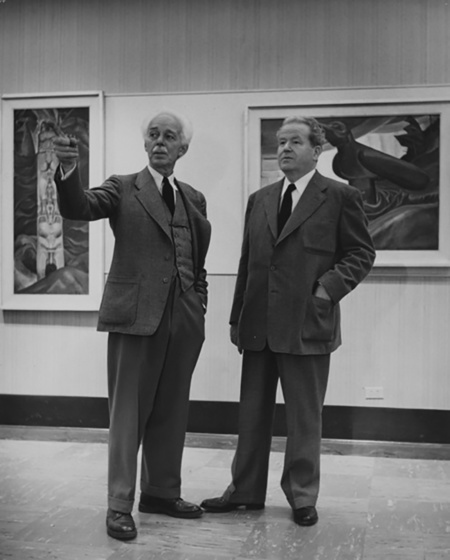
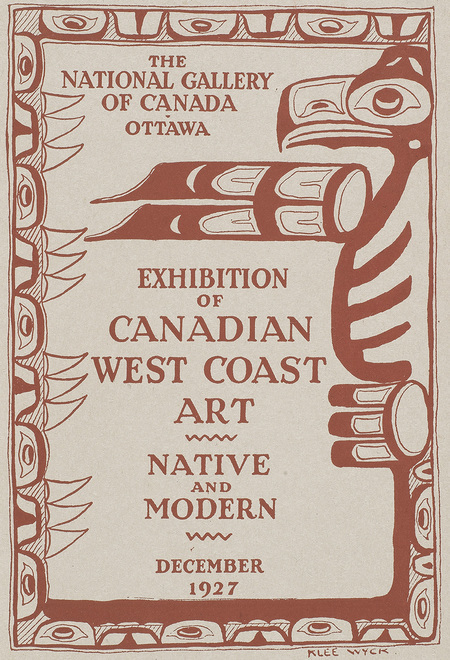
1911
Grand Palais, Société du Salon d’Automne, Paris.
1913
Dominion Hall, Vancouver. Solo exhibition.
1927
Exhibition of Canadian West Coast Art: Native and Modern, National Gallery of Canada, Ottawa. Travelled to Art Gallery of Toronto (Art Gallery of Ontario); Art Association of Montreal (Montreal Museum of Fine Arts).
1930
Group of Seven, Art Gallery of Toronto (Art Gallery of Ontario). Travelled to Art Association of Montreal (Montreal Museum of Fine Arts).
1931
Group of Seven, Art Gallery of Toronto (Art Gallery of Ontario).
1938
Exhibition by Emily Carr, Vancouver Art Gallery.
A Century of Canadian Art, Tate Gallery, London, England.
1939
Canadian Group of Painters, New York World’s Fair.
1945–46
Emily Carr: Her Paintings and Sketches, collaboration between Art Gallery of Toronto (Art Gallery of Ontario) and National Gallery of Canada, Ottawa. Travelled to Art Association of Montreal (Montreal Museum of Fine Arts) and Vancouver Art Gallery.
1949
Memorial Exhibition, Henry Art Gallery, Seattle.
1951
Emily Carr Memorial Galleries, opening exhibition, Vancouver Art Gallery.
1952
Venice Biennale, with David Milne, Alfred Pellan, and Goodridge Roberts. Canada’s first participation in this event.
1958
One Hundred Years of B.C. Art, Vancouver Art Gallery.
1962
The World of Emily Carr: A New Exhibition of Her Paintings from the Newcombe Collection, Hudson’s Bay Company, Victoria and Vancouver.
1971
Emily Carr: A Centennial Exhibition Celebrating the One Hundredth Anniversary of Her Birth, organized by Vancouver Art Gallery. Travelled to Montreal Museum of Fine Arts; Royal Ontario Museum, Toronto.
1974
Contemporaries of Emily Carr in British Columbia, Simon Fraser Gallery, Burnaby, B.C.
1977
Emily Carr Gallery, opening exhibition, Provincial Archives of British Columbia, Victoria.
1979
Emily Carr: The Mature Years—Les années de maturité, organized by Vancouver Art Gallery. Travelled to Canada House, London, England; Centre culturel canadien, Paris.
1982
Emily Carr: Sky Paintings, Art Gallery of Greater Victoria.
1983
Visions and Victories: Ten Canadian Women Artists, London Regional Art Gallery (Museum London).
1986–87
The Advent of Modernism, organized by High Museum of Art, Atlanta. Travelled to Center for the Fine Arts, Miami; Brooklyn Museum; Glenbow Museum, Calgary.
1987–88
The Expressionist Landscape: North American Modernist Painting, 1920–1947, organized by Birmingham Museum of Art, Alabama. Travelled to IBM Gallery of Science and Art, New York; Everson Museum of Art, Syracuse; Akron Art Museum; Vancouver Art Gallery.
1990
Emily Carr, National Gallery of Canada, Ottawa.
The True North: Canadian Landscape Painting, 1896–1939, Barbican Art Gallery, London, England.
1990–91
The Logic of Ecstasy, organized by London Regional Art and Historical Museums (Museum London). Travelled to Art Gallery of Greater Victoria; Edmonton Art Gallery (Art Gallery of Alberta); Mendel Art Gallery, Saskatoon; Beaverbrook Art Gallery, Fredericton; Dalhousie Art Gallery, Halifax.
1991
Emily Carr in France, Vancouver Art Gallery.
1995–96
Gasoline, Oil, and Paper: The 1930s Oil-on-Paper Paintings of Emily Carr, organized by Mendel Art Gallery, Saskatoon. Travelled to Edmonton Art Gallery (Art Gallery of Alberta); Art Gallery of Greater Victoria.
1998–99
Emily Carr: Art and Process, organized by Vancouver Art Gallery. Travelled to Art Gallery of Greater Victoria; Kamloops Art Gallery.
1999–
2000
To the Totem Forests: Emily Carr and Contemporaries Interpret Coastal Villages, organized by Art Gallery of Greater Victoria. Travelled to Vancouver Art Gallery; Kamloops Art Gallery.
2001–02
Carr, O’Keeffe, Kahlo: Places of Their Own, organized by McMichael Canadian Art Collection, Kleinburg, ON. Travelled to Santa Fe Museum of Fine Arts; National Museum of Women in the Arts, Washington, D.C.; Vancouver Art Gallery.
Emily Carr: Eccentric, Artist, Author, Genius, Royal British Columbia Museum, Victoria.
2006–08
Emily Carr: New Perspectives on a Canadian Icon, collaboration between Vancouver Art Gallery and National Gallery of Canada, Ottawa. Travelled to Art Gallery of Ontario, Toronto; Montreal Museum of Fine Arts; Glenbow Museum, Calgary.
2007–08
Emily Carr and the Group of Seven, Vancouver Art Gallery.
2008
Canadian Women Modernists: The Dialogue with Emily Carr, Vancouver Art Gallery.
2009
Two Visions: Emily Carr and Jack Shadbolt, Vancouver Art Gallery.
2010–13
Emily Carr: On the Edge of Nowhere, Art Gallery of Greater Victoria.
2011
The Other Emily: Redefining Emily Carr, Royal British Columbia Museum, Victoria.
2012
Documenta 13, Kassel, Germany.
2014
From the Forest to the Sea: Emily Carr in British Columbia, Dulwich Picture Gallery, London, England. Travelled to Art Gallery of Ontario, Toronto, 2015.
Convoluted Beauty: In the Company of Emily Carr, Mendel Art Gallery, Saskatoon.
Writings by Emily Carr
Carr’s gifts as an artist were paralleled by her literary accomplishments. She wrote extensively on her life and work, the people who were important to her, and the places where she lived and travelled. Her efforts were rewarded by a wide readership and acclaim and helped to reinforce her reputation as an important figure on the national art scene.
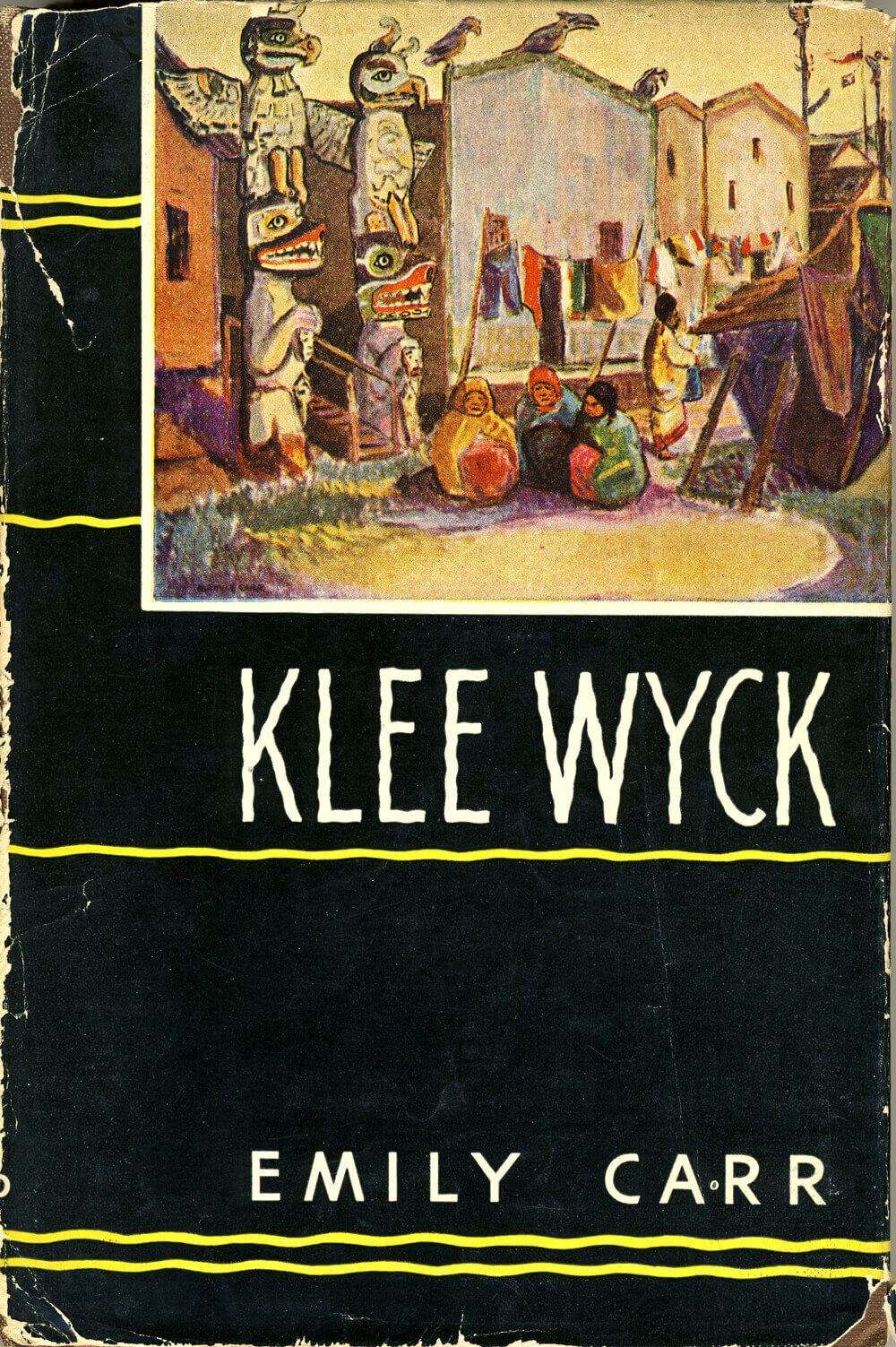
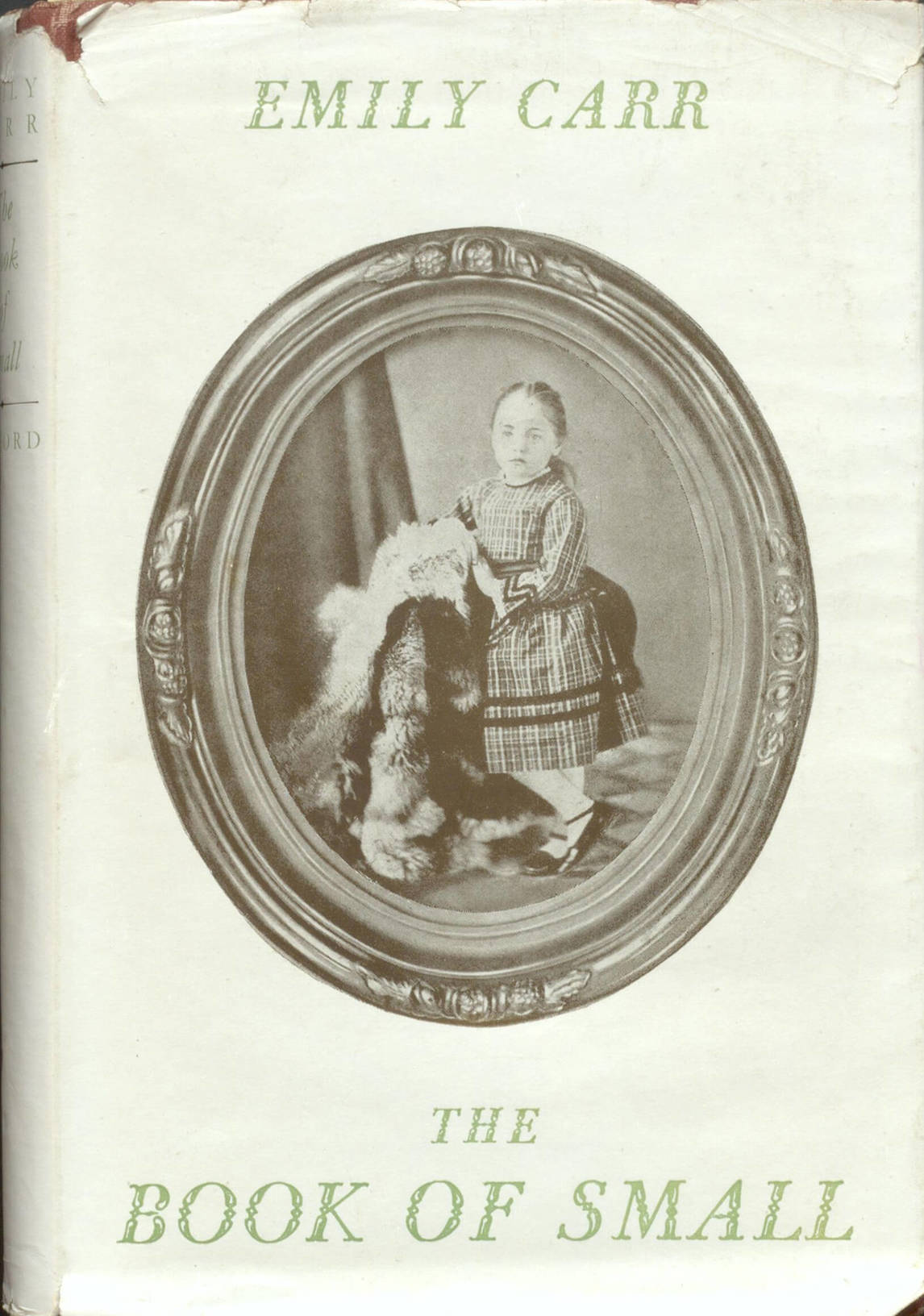
“Lecture on Totems,” 1913. In Opposite Contraries: The Unknown Journals of Emily Carr and Other Writings. Edited by Susan Crean. Vancouver: Douglas & McIntyre, 2004.
“Modern and Indian Art of the West Coast.” Supplement, McGill News, June 1929.
Fresh Seeing: Two Addresses by Emily Carr. Speech to Women’s Canadian Club of Victoria, Crystal Garden, 1930. Preface by Doris Shadbolt, introduction by Ira Dilworth. Toronto: Clarke, Irwin, 1972.
Klee Wyck. Toronto: Oxford University Press, 1941.
The Book of Small. Toronto: Oxford University Press, 1942.
The House of All Sorts. Toronto: Oxford University Press, 1944.
Growing Pains: The Autobiography of Emily Carr. Foreword by Ira Dilworth. Toronto: Oxford University Press, 1946.
A Little Town and a Little Girl. Toronto: Clarke, Irwin, 1951.
The Heart of a Peacock. Edited by Ira Dilworth. Toronto: Oxford University Press, 1953.
Pause: A Sketch Book. Edited by Ira Dilworth. Toronto: Clarke, Irwin, 1953.
An Address. Introduction by Ira Dilworth. Toronto: Oxford University Press, 1955.
Hundreds and Thousands: The Journals of Emily Carr. Toronto: Clarke, Irwin, 1966. Reprinted with introduction by Gerta Moray. Vancouver: Douglas & McIntyre, 2006.
Dear Nan: Letters of Emily Carr, Nan Cheney and Humphrey Toms. Edited by Doreen Walker. Vancouver: University of British Columbia Press, 1990.
Flirt, Punk and Loo: My Dogs and I. Vancouver: Douglas & McIntyre, 1997.
The Complete Writings of Emily Carr. Edited by Doris Shadbolt. Vancouver: Douglas & McIntyre, 1997.
Opposite Contraries: The Unknown Journals of Emily Carr and Other Writings. Edited by Susan Crean. Vancouver: Douglas & McIntyre, 2003.
Corresponding Influence: Selected Letters of Emily Carr and Ira Dilworth. Edited by Linda Morran. Toronto: University of Toronto Press, 2006.
Sister and I: From Victoria to England. Introduction by Kathryn Bridge. Victoria: Royal British Columbia Museum, 2011.
Sister and I in Alaska. Edited by David Silcox. Vancouver: Figure 1 Publishing, 2014.
Critical Interpretations
Comprehensive documentation exists on Carr both in major art publications and in critical reviews. New archival discoveries have also been made regularly since her death, and the scholarship on her work continues to grow and be enhanced by new interpretations.

Blanchard, Paula. The Life of Emily Carr. Vancouver: Douglas & McIntyre, 1987.
Braid, Kate. Emily Carr: Rebel Artist. Montreal: XYZ Publishing, 2000.
Bridge, Kathryn. Emily Carr in England. Victoria: Royal British Columbia Museum, 2014.
Crosby, Marcia. “Construction of the Imaginary Indian.” In Vancouver Anthology: The Institutional Politics of Art, edited by Stan Douglas, 267–91. Vancouver: Talon Books, 1991.
Dawn, Leslie. National Visions, National Blindness: Canadian Art and Identities in the 1920s. Vancouver: University of British Columbia Press, 2006.
DeSoto, Lewis. Emily Carr. Extraordinary Canadians series, edited by John Ralston Saul. Toronto: Penguin Canada, 2011.
Hembroff-Schleicher, Edythe. Emily Carr: The Untold Story. Saanichton, B.C.: Hancock House, 1978.
Hill, Charles C., Johanne Lamoureux, and Ian M. Thom, eds. Emily Carr: New Perspectives on a Canadian Icon. Vancouver: Douglas & McIntyre; Ottawa: National Gallery of Canada, 2006.
Laurence, Robin. Beloved Land: The World of Emily Carr. Vancouver: Douglas & McIntyre; Seattle: University of Washington Press, 1996.
Macnair, Peter, and Jay Stewart. To the Totem Forests: Emily Carr and Her Contemporaries Interpret Coastal Villages. Victoria: Art Gallery of Greater Victoria, 1999. Exhibition catalogue.
Mallory, Catherine. Victorian and Canadian Worlds of Emily Carr: Study of a Divided Imagination. Master’s thesis, Dalhousie University, Halifax, 1979.
Milroy, Sarah, and Ian Dejardin, eds. From the Forest to the Sea: Emily Carr in British Columbia. Toronto: Art Gallery of Ontario; London, U.K.: Dulwich Picture Gallery, 2014.
Moray, Gerta. “Wilderness, Modernity and Aboriginality in the Paintings of Emily Carr.” Journal of Canadian Studies 33, no. 2 (1998): 43–65.
———. “Emily Carr and the Traffic in Native Images.” In Antimodernism and Artistic Experience: Policing the Boundaries of Modernism, edited by Lynda Jessup and Matthew Teitelbaum, 71–93. Toronto: University of Toronto Press, 2001.
———. “The Invisibility of Lee Nam, Chinese Artist in British Columbia.” In Untold Stories of British Columbia, edited by Paul Wood. Victoria: University of Victoria Humanities Centre, 2003.
———. Unsettling Encounters: First Nations Imagery in the Art of Emily Carr. Vancouver: University of British Columbia Press, 2006.
Newlands, Anne. Emily Carr: An Introduction to Her Life and Art. Willowdale, ON: Firefly, 1996.
O’Brian, John, and David Alexander, eds. Gasoline, Oil, and Paper: The 1930s Oil-on-Paper Paintings of Emily Carr. Saskatoon: Mendel Art Gallery, 1995. Exhibition catalogue.
O’Brian, John, and Peter White, eds. Beyond Wilderness: The Group of Seven, Canadian Identity, and Contemporary Art. Montreal & Kingston: McGill-Queen’s University Press, 2007.
Schiff, Bennett. “Canada’s National Treasure.” Smithsonian, March 1999, 102–11.
Shadbolt, Doris. The Art of Emily Carr. Vancouver: Douglas & McIntyre, 1979.
———. Emily Carr. Vancouver: Douglas & McIntyre, 1990.
———. Seven Journeys: The Sketchbooks of Emily Carr. Vancouver: Douglas & McIntyre; Seattle: University of Washington Press, 2002.
Thom, Ian. Emily Carr in France. Vancouver: Vancouver Art Gallery, 1991. Exhibition catalogue.
———. Emily Carr: Art and Process. Vancouver: Vancouver Art Gallery, 1998. Exhibition catalogue.
Tippett, Maria. Emily Carr: A Biography. Toronto: Oxford University Press, 1979. Reprint, Toronto: Penguin Canada, 1982.
Udall, Sharyn. Carr, O’Keeffe, Kahlo: Places of Their Own. New Haven: Yale University Press, 2000.
Walker, Stephanie Kirkwood. This Woman in Particular: Contexts for the Biographical Image of Emily Carr. Foreword by William Closson James. Waterloo, ON: Wilfrid Laurier University Press, 1996.
Film and Theatre
Carr’s life story and art have fascinated audiences since the National Film Board of Canada produced the first film on her life in 1946, as part of a Canadian artists series. Since that time her work has been featured in a number of critically acclaimed documentaries and stage productions.
Four major documentaries have been produced on the life of Emily Carr. A one-hour piece, The Life and Times of Emily Carr, was produced in 1997 by Biography Channel, a Canadian television network affiliated with the CBC. In 1978 the National Film Board of Canada produced two films, Growing Pains and Little Old Lady on the Edge of Nowhere.
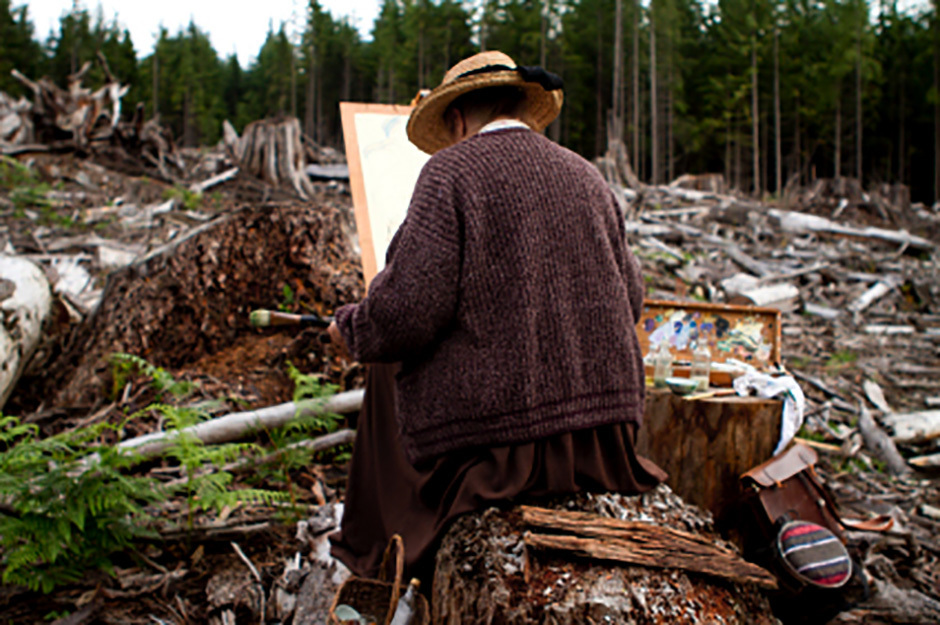
The feature-length documentary Winds of Heaven: Emily Carr, Carvers and the Spirit of the Forest(2010, directed by Michael Ostroff) examines her work with indigenous cultures more thoroughly. The National Film Board produced Bone Wind Fire (2011), a short documentary about Carr, Georgia O’Keeffe, and Frida Kahlo.
A short memorial presented in 1963 on CBC Radio, featuring A.Y. Jackson, can be heard athttp://www.cbc.ca/archives/categories/arts-entertainment/visual-arts/visual-arts-general/remembering-artist-emily-carr.html. Courtesy Royal British Columbia Museum Archives, Victoria, D-03843.
Carr’s work has also been the inspiration for numerous stage productions: Emily Carr: A Stage Biography with Pictures (Herman Voaden, 1960); Klee Wyck: A Ballet for Emily Carr (score by Ann Mortifee, performed by the Anna Wyman Dance Theatre, CBC TV, 1975); Song of This Place (Joy Coghill, 1987); The Magnificent Voyage of Emily Carr (Jovette Marchessault, 1990, published as a book in 1992); and The Remarkable Emily Carr (Susan Shillingford, 2008).
Web Resources
Art Gallery of Greater Victoria: http://aggv.ca/collection/emily-carr
Canadian Encyclopedia: http://www.thecanadianencyclopedia.com/articles/emily-carr
Library and Archives Canada, To the Totem Forests: Emily Carr and Contemporaries Interpret Coastal Villages: http://epe.lac-bac.gc.ca/100/205/301/ic/cdc/totems/contents.htm
Vancouver Art Gallery: http://www.vanartgallery.bc.ca/collection_and_research/emily_carr.html
Virtual Museum of Canada, Vancouver Art Gallery: http://www.museevirtuel-virtualmuseum.ca/sgc-cms/expositions-exhibitions/emily_carr/en/index.php

 About the Author
About the Author
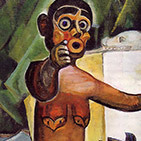 More Online Art Books
More Online Art Books
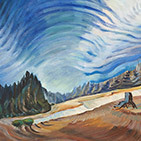 Acknowledgements
Acknowledgements